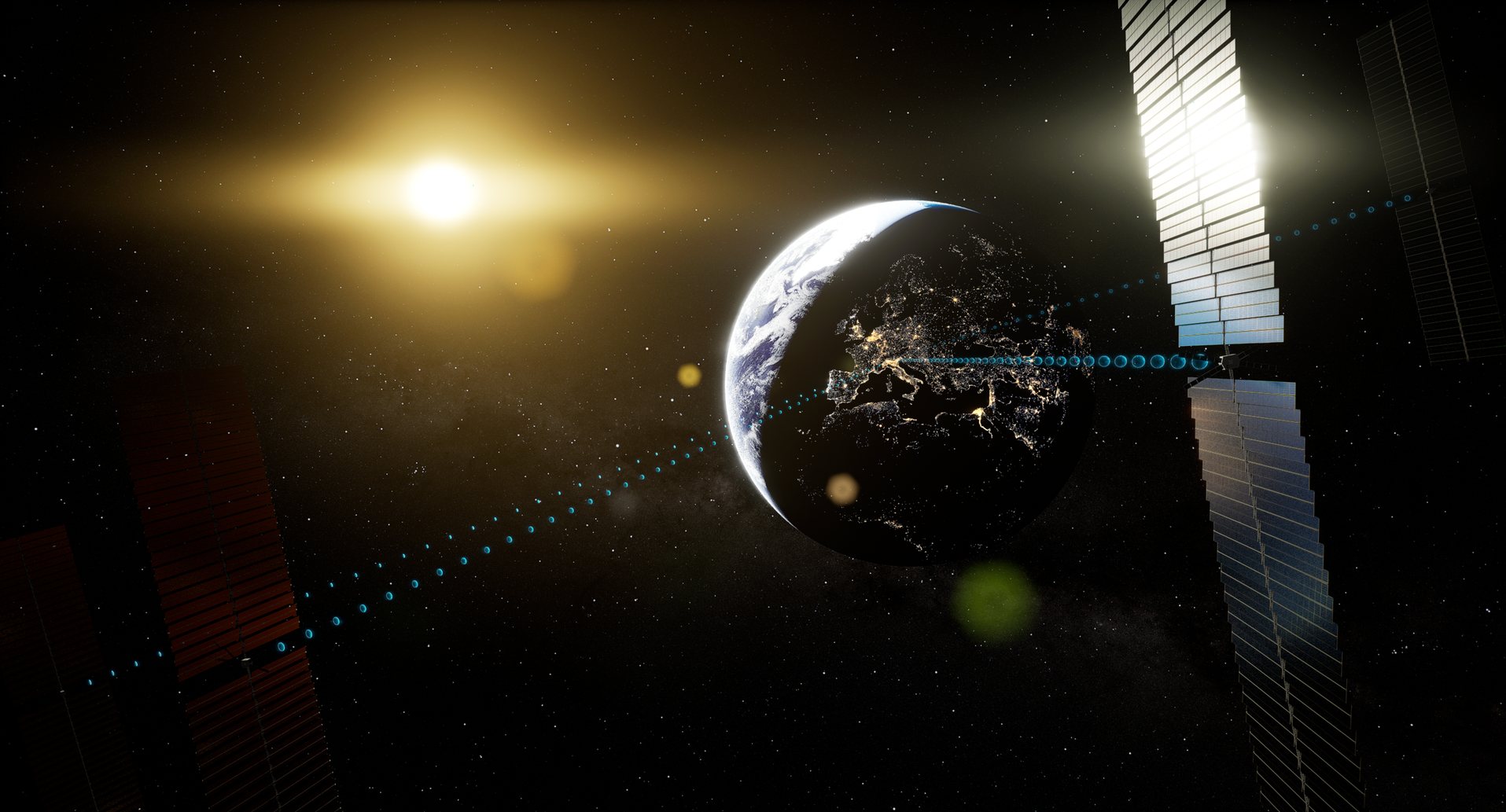Solar power stations in space could replace need for nuclear plants
Energy harnessed by robot-built satellites and beamed to earth isn’t as science fiction as it sounds... The European Space Agency has said it is finally considering it

Harnessing the sun’s energy with solar power stations in space and then beaming it down to earth is "theoretically workable" and could provide clean, renewable energy, experts at the European Space Agency (ESA) have said.
One of the main criticisms of (Earth-based) renewable energy is the largely erroneous belief that it is too intermittent. The sun, however, never stops shining in space.
While the concept sounds like the beginning of a near-future disaster movie, the ESA – of which the UK is a member – is proposing a research and development programme called SOLARIS to help bring about the reality.
Here’s what you need to know about this space-based solar panel technology and if this could put an end to needing nuclear power plants here on Earth.
Solar power stations in space would be built by robots
The ESA admits there are still "significant uncertainties and technical challenges" to be overcome if the project is to be successful.
Solar power satellites in geostationary orbit would harvest sunlight on a permanent 24/7 basis, then convert it into low-power density microwaves to safely beam down to receiver stations on Earth.
The physics involved means that these satellites would have to be large, on the order of several kilometres in size, and the same being true for the collecting "rectennas" down on Earth’s surface.
Get the Homebuilding & Renovating Newsletter
Bring your dream home to life with expert advice, how to guides and design inspiration. Sign up for our newsletter and get two free tickets to a Homebuilding & Renovating Show near you.
The ESA says technical advancements in areas such as in-space manufacturing and robotic assembly, would therefore be required. It sounds like a huge leap, but remote manufacturing in space already takes place on the International Space Station using 3D printers.
“These are the kind of technical questions that SOLARIS will look into, to explore further the feasibility of the concept, so that Europe could make an informed decision in 2025 on whether to proceed with a Space-Based Solar Power programme in the future,” says Sanjay Vijendran, ESA’s lead for the SOLARIS proposal.
Power would be beamed down to earth for use
The sun’s solar power would be transformed into electricity via photovoltaic cells in geostationary orbit around Earth.
The power is then transmitted wirelessly in the form of microwaves at 2.45 GHz to dedicated receiver stations on Earth, called "rectennas", which convert the energy back into electricity and feed it into the local grid.
If you’re worried about a Dr Evil-type genius hijacking the system and using it as a death ray, the ESA claims the system would be designed in a way that peak power density could not exceed levels at which it could be a threat to property or living beings.
It adds: “Regardless, redundant safeguards would be in place to prevent misalignment of the beam and ensure the power is shut off when not aligned correctly with the ground station, for example interlocked pilot beams from the ground station to the satellite would allow for precise steering and control.
“As with any large infrastructure project, multiple layers of defence and automated responses would be in place to prevent any harmful external attack.”
Could it replace the need for nuclear power in the UK?
Nuclear power plants have been put forward as one alternative to fossil fuel-powered plants because they produce no greenhouse gas emissions during operation.
However, opponents of nuclear power say the safety concerns and high cost of nuclear power has rendered it obsolete in the face of renewable energy like solar and wind.
“The mistake that is often made is to compare the concept with ground-based solar power, when really space solar offers novel characteristics such as baseload power that actually serves to complement rather than compete with intermittent sources like ground solar and wind,” added Vijendran.
“In this sense they could offer an alternative option to nuclear power in future — where studies show that the space-based solution ends up being surprisingly competitive.”
Could solar power plants in space actually happen?
According to scientists, space-based power is not only viable, but may be more cost-effective than other carbon-free energy sources.
The programme proposal comes at a point when global interest in Space-Based Solar Power – which has been discussed by engineers and scientists for decades – is at its highest for decades, with in-orbit demonstrations being prepared in the US, China, and Japan.
The UK has established its Space Energy Initiative to develop Space-Based Solar Power, while the European Commission is funding a project investigating large lightweight reflectors redirecting sunlight onto solar farms on the ground called SOLSPACE.
“Considering the climate and energy crises, and the rapid strides we’re making in space capabilities, now is the time to investigate if Space-Based Solar Power can be part of the solution — it’s the responsible thing to do,” adds Dr. Vijendran.
The prospect of switching on your kettle using energy harvested in space is perhaps not as far away as you think.
Sam is based in Coventry and has been a news reporter for nearly 20 years. His work has featured in the Mirror, The Sun, MailOnline, the Independent, and news outlets throughout the world. As a copywriter, he has written for clients as diverse as Saint-Gobain, Michelin, Halfords Autocentre, Great British Heating, and Irwin Industrial Tools. During the pandemic, he converted a van into a mini-camper and is currently planning to convert his shed into an office and Star Wars shrine.

